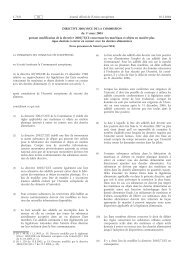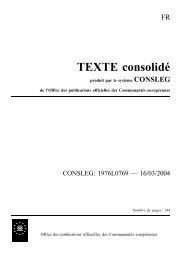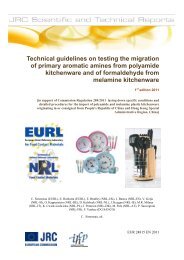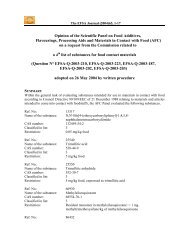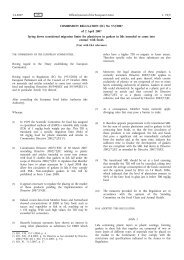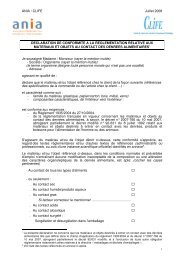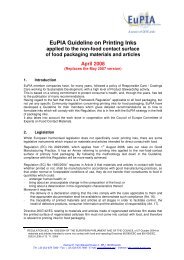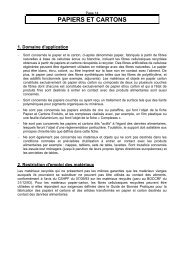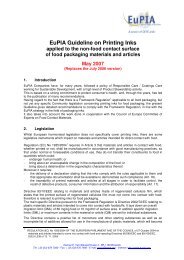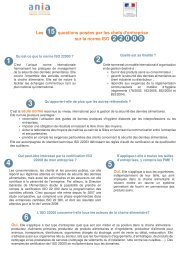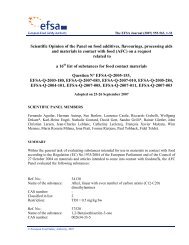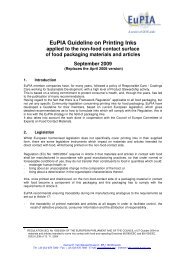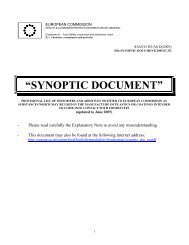WORKING DOCUMENT - Contact alimentaire
WORKING DOCUMENT - Contact alimentaire
WORKING DOCUMENT - Contact alimentaire
- No tags were found...
Create successful ePaper yourself
Turn your PDF publications into a flip-book with our unique Google optimized e-Paper software.
ANNEX IVGENERIC DESCRIPTION OF COATINGS TYPICALLY USED IN FOOD CONTACTAPPLICATIONS AND THEIR COMPONENTSANNEX IV.I - DESCRIPTION OF COATINGSCoatings typically consist of:1. Resins (synthetic or natural), polymers or prepolymers2. Crosslinking agents or crosslinking prepolymers or crossslinking resins. Note thatthese are present only in thermoset (or predominately) systems.3. Additives, such as waxes, pigments, lubricants, flow aids and defoamers4. Organic solvents and or water (not always)• Items 1-3 are designed to remain in the final film. In the case of thermosetsystems, the cured coating comprises a (densely) crosslinked polymeric matrixresulting from the reaction of items 1 with 2.• Coatings are normally applied in the wet state (although powder coatingsystems can also be used in contact with food), and cannot fulfil their desiredfunctions until organic solvent and or water (if present) has been removed,and, in the case of thermoset coatings, crosslinking of items 1 with 2 hasoccurred.• Organic solvent and water-free thermoplastic coatings rely on melting and resolidifyingto form the food contact layer.• Organic solvent and water-free thermoset coatings rely on crosslinking to formthe food contact layer, which may or may not involve a melting process.It is important that there is adequate crosslinking and / or removal of organic solventand or water otherwise this will result in the finished article being unsuitable for itsintended application.The resins or polymers used in coatings can be either thermoplastic or thermoset.Thermoplastic resins or polymers undergo little if any further intentional chemicalreactions with other components in the coating. As such they are typically of highmolecular weight and the final properties of the coating are normally inherent in thethermoplastic resins or polymers as mixed into the applied coating.Thermoset resins or polymers or prepolymers are specifically designed to undergochemical reactions (normally crosslinking or curing) either with other components inthe coating such as crosslinking agents or crosslinking prepolymers or crosslinkingresins or with themselves or any combination to form a final film which will be incontact with foodstuffs. Crosslinking agents can also be considered thermosetstarting materials. Typically the components intended to react with each other or31Europäische Vereinigung der Lack-, Druckfarben- und KünstlerfarbenindustrieEuropean Council of Paint, Printing Inks and Artists' Colours IndustryAvenue E. Van Nieuwenhuyse 4 - BE-1160 BrusselsTel:+32 (0)2 676 7480 - Fax: + 32 (0)2 676 7490 - E-mail: secretariat@cepe.org -Internet: http://www.cepe.org/




